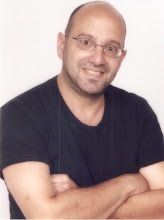[posted 2/8/11 to http://wrestlingbabylon.wordpress.com]
(2/16/11 CLARIFICATION: According to Duncan MacRae, managing editor of Neurosurgery, Dr. Bennet Omalu’s article “Emerging Histomorphologic Phenotypes of Chronic Traumatic Encephalopathy [CTE] in American Athletes” is scheduled to be published in the journal’s July 2011 issue. — Irv Muchnick)
In his latest letter to me last year threatening to sue me for my reporting, World Wrestling Entertainment lawyer Jerry McDevitt pointed out that Dr. Bennet Omalu’s study of dead wrestler Chris Benoit’s brain was not published in a peer-reviewed scientific journal until 2010, and then only in “an obscure nursing journal.” See “New Threats From WWE Lawyer Jerry McDevitt,” December 17, 2010, http://wrestlingbabylon.wordpress.com/2010/12/17/new-threats-from-wwe-lawyer-jerry-mcdevitt/.
It turns out that there is a long and involved story behind why Omalu’s article in the Journal of Forensic Nursing, “Chronic traumatic encephalopathy in a professional American wrestler,” was not published in Neurosurgery. (The piece itself, an exhibit of McDevitt’s letter to me, is viewable at http://muchnick.net/omalu_journal_article.pdf.)
And this is not a story that I expect WWE – let alone the National Football League – to enjoy.
Before proceeding, let me clarify that the source for the following information is not Dr. Nelson Oyesiku, the current editor-in-chief of Neurosurgery. Neither Oyesiku nor Dr. Christopher Getch, the current president of the Congress of Neurological Surgeons (publisher of Neurosurgery), has responded to my email queries.
However, I understand that Oyesiku was named to replace Dr. Michael Apuzzo as editor of Neurosurgery with a mandate that included reversing the journal’s perception as a de facto NFL house organ for academic articles answering loaded questions, which in turn served the commercial interests of the league and its contract doctors and business partners. Apuzzo, a consultant for the New York Giants, had overseen the publication of a decade’s worth of controversial studies on aspects of brain trauma in sports – including the 2006 article on the Riddell helmet manufacturer’s new design, which was co-authored by the company’s chief engineer and by Pittsburgh Steelers team neurologist and imPACT software entrepreneur Dr. Joseph Maroon, and is now the focus of a Federal Trade Commission probe of Riddell’s allegedly misleading promotional claims.
But equally important is what Neurosurgery did not publish under editor Apuzzo. Some of it was seminal research authored by Dr. Omalu. In light of everything we all now know about the NFL’s snail-paced and grudging acceptance of CTE as a real and discrete pathology – a chronology exposed most famously in 2009 hearings of the House Judiciary Committee – it is not hard to imagine that Omalu’s roadblocks to publication were more political than scientific.
Omalu’s first round of CTE studies involved six brains of death athletes. Benoit’s was number six – and the fifth positive finding.
The case studies of two Pittsburgh Steelers, Mike Webster and Terry Long, written up by Omalu and co-authors, were published in Neurosurgery. But Omalu met resistance in getting publication approval for a third article, on Andre Waters. Omalu came to believe that the reason was that the pattern was becoming all too clear both for his medical colleagues and for the general public. One case is “interesting.” Two can still be written off as anomalous. By the time you get to a third, you have what is known within the profession as a “case series” – something controlled and replicated enough times to take very seriously for redoubled study (as well as, of course, more readily available funding and attention).
It was during this period of, essentially, exile from Neurosurgery that Omalu published the Benoit study in the Journal of Forensic Nursing. By the way, just because the nursing journal is not as well known as Neurosurgery has nothing to do with the rigor of the former’s own peer-review process and editorial standards, or with the soundness of Omalu’s work. Whether the Journal of Forensic Nursing has the resources to issue accompanying press releases for its articles – another piece of McDevitt mudslinging – is similarly irrelevant.
I am happy to report that the new regime of Neurosurgery lists Omalu on its masthead as an associate editor, Sports & Rehabilitation. The section editor is Dr. Julian Bailes, Omalu’s co-director of the West Virginia Brain Injury Research Institute.
In addition, I am told that Omalu has a piece upcoming in the March issue of Neurosurgery. The article will review the whole history, scientific and political, of his groundbreaking CTE work. Doctors and lay observers alike eagerly await it.
Irv Muchnick
Subscribe to:
Post Comments (Atom)

No comments:
Post a Comment